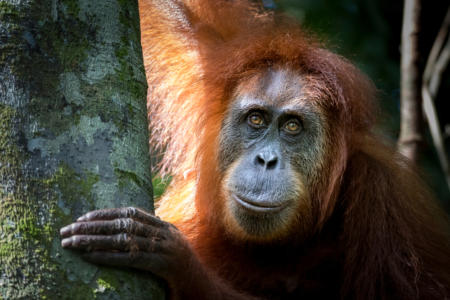
Today I am packing for a ten-day trip to the San Juan Islands where my husband and I will be writing, kayaking, biking, beach-walking, and kicking back while we watch seals and otters, and maybe Orcas, frolicking in the bay. Because we are driving, we can take as much as the car will hold. I always try to travel light, but it’s a struggle, and I usually fail. In the clothing department there is always one more thing I think I need: an extra layer of warmth, another pair of shoes, a cap, a skirt in case some fancy occasion arises (it won’t). We’ll pack bikes and bike helmets and life jackets and kayak paddles and my wet suit for daily ocean dips. Because we’ll be writing I’ll bring all I’ve written so far on my novel-in-progress—manilla file folders, looseleaf books full of notes, a binder with the completed pages, several critical research books—along with writing materials including fresh writing pads and pens, lap desk, paper clips, computer, portable printer and printer paper, as well as reading glasses and headlamp. Then there are the items we need to bring necessitated by my ALS: the ventilator and humidifier I use at night, the “cough assist” machine; the multiple drugs and syringes needed for inserting those drugs into my feeding tube; my text-to-voice computer for communicating, along with its attachment for “eye gaze” which I need to be practicing. Our car will be loaded and at the last minute I will be tossing in an extra pillow and blanket for the drive, a pair of shorts in case it gets hot, a fanny-pack. .
I deplore this need of mine to make sure I have enough “stuff.” My justification is that I was raised by a father who stressed the importance of being prepared. The proverbial Boy Scout, he came of age during the Depression and understood scarcity. As kids we thought it was funny that he had clothing he’d had for thirty or forty years, still in mint condition. His dresser drawers were filled with extra shirts and sweaters and socks, just in case. When we climbed mountains in New Hampshire on eighty-five- degree days, he instructed us to be prepared for sleet and snow at the summit—and sometimes he was right. I took his teachings to heart and have always been the one carrying the extra sweater or energy bar.
I am not a huge fan of zoos, but one of the most riveting moments of my life took place at the Portland Zoo where my husband and I found ourselves one afternoon, mesmerized by an orangutan reclining only inches from us on the other side of the heavy-duty glass. He was stretched out on a slab of cardboard, back to us, oblivious to our presence. After a brief rest, he rose, lumbered to the opposite side of his enclosure and seized another piece of cardboard which he brought back to his original position near us. He moved the old cardboard out of the way and arranged the new piece this way and that until he finally lay down on it. Almost immediately he was up again, clearly dissatisfied. Off he went in search of something else. He returned with a third piece of cardboard and a banana. He ate the banana then worked with the third cardboard slab, seeking some kind of perfection that appeared to be out of reach. After reclining once more it wasn’t long before he rose again and resumed his search.
My husband and I watched this primate for more than half an hour, mesmerized. This orangutan was us. He was transporting things from here to there exactly as we do around our house. Yes, he had scruffy orange hair, and a black snout, walked with a slouch using hands and legs, but the way he manipulated and tweaked those pieces of cardboard, looking to improve his comfort, was so suggestive of human behavior we were dumbstruck.
We shouldn’t have been surprised. Orangutans and humans are both primates with brains and hands that make them (us) capable of using tools with relative ease. Many animals manipulate the “things” in their environment to create dens and nests that will optimize survival and reproduction and define their areas of dominion. Humans have certainly taken the acquisition of objects to an extreme—cell phones, computers, cars, etc.—but it has always been central to our nature to live and work in relationship to the things around us.
I have been thinking about this since ALS has decreased my ability to manipulate the objects in the world around me. I do far less arranging and rearranging than I used to because I move more slowly, with less certain balance, and my grip is unreliable, so everything takes more work. I often have to think of workarounds. I’m no longer like the orangutan, popping up to fetch things on a whim. What used to be my “dominion,” the space where I carry things back and forth, has shrunk. I spend a lot of time in my bedroom office where things I need are spread within reach. It’s a hodgepodge, but I know exactly where everything is. There are other objects in the recesses of the house that I will never use again, probably never see again; they will remain there until some curious orangutan visits, digs around, and finds a use for them.
Meanwhile, we will take off for the San Juan Islands with far too much stuff, but definitely prepared for every weather front and every activity.
Add Comment